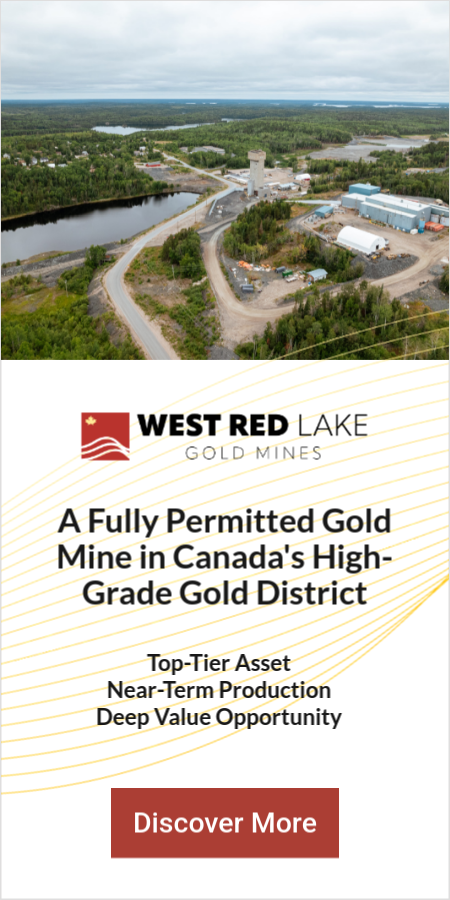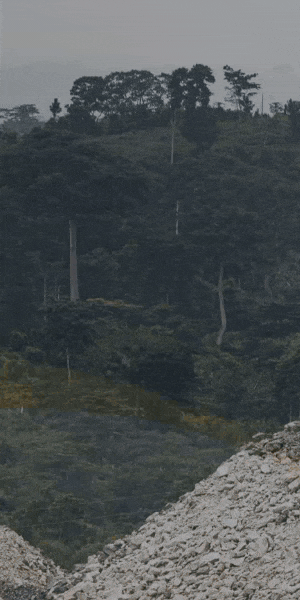i-80 Gold: Nevada's Next Mid-Tier Gold Producer Emerges

i-80 Gold advances Nevada gold portfolio toward mid-tier production as sustained precious metal strength supports 14M oz resource base development timeline.
- i-80 Gold operates a portfolio of Nevada gold projects targeting 600,000+ ounces annual production by the early 2030s, positioning the company as a potential mid-tier producer in North America's top mining jurisdiction.
- The company controls 6.5 million ounces in Measured & Indicated resources and 7.5 million ounces Inferred across five brownfield projects with existing infrastructure, significantly reducing development timelines and capital requirements.
- Recent preliminary economic assessments across all five projects demonstrate combined after-tax NPV of $1.6 billion at $2,175/oz gold and $4.9 billion at $3,000/oz gold, with the Lone Tree autoclave serving as strategic processing infrastructure for high-grade underground deposits.
- i-80 Gold completed approximately $200 million in equity financing during 2025, strengthening the balance sheet to fund near-term underground development at Granite Creek and Archimedes while advancing permitting and feasibility studies across the portfolio.
- With gold rallying 41% in 2025 amid geopolitical uncertainty and central bank accumulation, i-80 Gold's Nevada-focused development strategy positions the company to capitalize on sustained precious metal strength through a phased production ramp-up.
Introduction: Nevada Gold Development in a Rising Price Environment
As gold prices surged past $4,300 per ounce in October 2025, representing a 41% gain year-to-date according to the World Bank's Commodity Markets Outlook, development-stage gold companies in premier jurisdictions are attracting renewed investor attention. i-80 Gold (NYSE American: IAUX, TSX: IAU) exemplifies this opportunity, controlling an extensive portfolio of Nevada-based gold projects at a time when geopolitical tensions, monetary policy expectations, and central bank purchases are driving sustained precious metal demand. The company's October 2025 corporate presentation outlines a clear pathway to mid-tier production status, with five brownfield assets advancing toward combined output exceeding 600,000 ounces annually.
The timing proves particularly relevant as World Bank analysts Kaltrina Temaj and Jeetendra Khadan noted in their November 12, 2025 analysis that safe-haven demand continues supporting gold prices, with central banks increasing their share of total demand to nearly 25% in 2024 compared with approximately 12% during 2015-2019. For companies like i-80 Gold with substantial resource bases and near-term production growth catalysts, this macro environment provides both valuation support and project financing opportunities as precious metals maintain strength into 2026.
Nevada's position as a Tier 1 mining jurisdiction enhances i-80 Gold's investment proposition. The state hosts prolific gold districts including the Carlin Trend and Battle Mountain-Eureka Trend, with i-80 Gold's properties situated near major producing operations such as Nevada Gold Mines' Turquoise Ridge Complex, which hosts approximately 20 million ounces of gold resources. This established mining infrastructure, combined with Nevada's stable regulatory framework and skilled workforce, reduces development risks compared with frontier jurisdictions while providing geological upside potential.
Company Overview: Building Nevada's Next Gold Producer
i-80 Gold operates five core gold projects across northern Nevada, each representing distinct stages of development with complementary production timelines. The portfolio includes Granite Creek Underground (currently in ramp-up phase), Archimedes Underground (construction initiated), Cove Underground, Granite Creek Open Pit, and Mineral Point Open Pit. This multi-asset strategy provides production diversification while allowing capital allocation flexibility as market conditions and project readiness evolve.
The company's mineral resource base totals 6.5 million ounces gold in Measured & Indicated categories and 7.5 million ounces Inferred, split between high-grade underground deposits and lower-grade but substantial open pit resources. Underground resources average 8.4 grams per tonne gold across 1.0 million M&I ounces and 8.5 grams per tonne across 2.5 million Inferred ounces. Open pit resources contain 5.5 million M&I ounces at 0.64 grams per tonne and 5.0 million Inferred ounces at 0.64 grams per tonne. Mineral Point additionally hosts significant silver mineralization with 104.3 million ounces M&I and 91.5 million ounces Inferred.
Management brings extensive Nevada mining experience, with CEO Richard Young previously leading Teranga Gold and Argonaut Gold, while COO Paul Chawrun held senior positions at Centerra Gold, Teranga Gold, and Detour Gold. According to the company's presentation, Young has "over 30 years' experience in mining, including finance and capital markets" while Chawrun is described as an "executive mining engineer with 30+ years of technical, operating, and corporate leadership experience." The Reno-based operations team includes executives with backgrounds at Nevada Gold Mines, Barrick Gold, and Kinross Gold, providing technical expertise specific to Nevada geology, metallurgy, and permitting requirements.
Key Development: Phased Production Growth Strategy
i-80 Gold's development plan establishes three production phases targeting increasing annual output. Phase 1 (2028-2029) anticipates 150,000-200,000 ounces annually from Granite Creek Underground, Archimedes Underground, and the refurbished Lone Tree autoclave processing facility. Phase 2 (2030-2031) adds Cove Underground and Granite Creek Open Pit for combined output of 300,000-400,000 ounces. Phase 3 (2032+) incorporates Mineral Point Open Pit, the portfolio's largest asset, targeting total production exceeding 600,000 ounces annually.
Preliminary economic assessments completed for all five projects during early 2025 demonstrate robust economics at multiple gold price scenarios. At $2,175 per ounce gold, combined after-tax net present value totals $1.6 billion with individual project NPVs ranging from $127 million (Archimedes) to $614 million (Mineral Point). At $3,000 per ounce gold, reflecting current spot market conditions, portfolio NPV increases to $4.9 billion with Mineral Point alone generating $2.3 billion NPV. Internal rates of return vary by project but exceed 20% across the underground portfolio at base case pricing.
The Lone Tree autoclave represents strategic infrastructure differentiating i-80 Gold from peers. As noted in the presentation, the company is "one of two Nevada companies with an autoclave processing facility," enabling treatment of refractory ore internally rather than relying on costly third-party toll milling. The planned refurbishment targets 2028 commissioning, with the company explaining that the "shift from toll-milling underground material to owner-operated processing increases payability on refractory material from 55% - 60% up to ~92% recovery." This operational shift substantially improves margins on high-grade underground production while reducing logistics complexity and counterparty risk.
Strategic Significance: Nevada's Resource Concentration
i-80 Gold ranks as Nevada's fourth-largest mineral resource holder, trailing only major producers Nevada Gold Mines, Kinross Gold, and others. The company's total measured and indicated resources of 6.5 million ounces position it above numerous mid-tier producers while maintaining significant exploration upside. According to the presentation, "all deposits open for expansion" with ongoing drill programs at Granite Creek, Archimedes, Cove, and Mineral Point targeting resource conversion and extension.
Geographic proximity to Nevada Gold Mines' Turquoise Ridge Complex, located just 10 kilometers from Granite Creek, provides geological validation and infrastructure synergies. Turquoise Ridge hosts approximately 20 million ounces of gold resources and has produced consistently for decades, demonstrating the district-scale mineralization potential. The presentation notes that i-80 Gold is "located 10 km from Nevada Gold Mines' prolific Turquoise Ridge Complex which currently hosts ~20Moz of gold resources" and is "situated at the intersection of the highly prolific Battle Mountain-Eureka and Getchell gold trends."
The company's dominant land position in the Eureka Mining District encompasses both Archimedes and Mineral Point properties. Historical production from the district exceeds 1.5 million ounces gold, with i-80 Gold controlling the majority of prospective ground for modern exploration and development. This consolidation provides operational flexibility and exploration efficiency while minimizing potential conflicts with adjacent operators. The presentation emphasizes the company's "dominant land position in the Eureka Mining District" located approximately 250 kilometers from the Lone Tree processing facility via road.
Current Activities: 2025 Operational Milestones
Granite Creek Underground achieved significant progress during 2025 despite dewatering challenges encountered during early ramp-up. Enhanced dewatering infrastructure installed in early 2025 improved water management, allowing consistent main decline advancement and mining rate optimization. The company reports "excellent resource reconciliation to model on tonnage and grade since ramp-up start in 2023" with an "underground exploration drift completed in Q2." Production guidance calls for "20,000 – 30,000 oz Au" during 2025, with steady-state targeted for first half 2026.
An ongoing South Pacific Zone infill drill program focuses on resource conversion, with 40 holes planned for approximately 14,000 meters. The presentation notes that the program is "currently underway focused on reclassifying inferred mineral resources" and that the zone "remains open at depth and along strike – historic drilling suggests the potential to extend mineralization >1 km north." Initial results prove encouraging, with the company reporting that "new assay results from the first six holes" show "robust high-grade mineralization across the South Pacific Zone" and "potential for continued expansion to the north and at depth."
Archimedes Underground commenced development during third quarter 2025 following receipt of Bureau of Land Management approval for portal construction. The presentation confirms that in "Q1 2025: Received Decision Record from the U.S. Bureau of Land Management to commence underground portals" with "surface infrastructure for external portal completed in Q2 2025" and "development of underground exploration drift commenced in Q3 2025." A sequential permitting approach allows mining above the 5100-foot elevation while finalizing approvals for deeper zones, enabling earlier production start compared with traditional full-permit scenarios.
Investor Considerations: Gold Rally Supporting Development Economics
Sustained gold price strength fundamentally improves i-80 Gold's project economics and financing capacity. The World Bank's October 2025 Commodity Markets Outlook projects continued gold strength into 2025 and 2026, supported by ongoing geopolitical tensions, monetary policy expectations, and central bank accumulation. For development companies, this environment creates favorable conditions for project financing, equity raises, and streaming arrangements that fund construction while minimizing dilution.
i-80 Gold's preliminary economic assessments utilized $2,175 per ounce gold for base case scenarios, establishing conservative benchmarks relative to current spot prices exceeding $3,000 per ounce. The presentation emphasizes this leverage, noting "$373M after-tax NPV5% at spot gold price of $3,000/oz" for Granite Creek Underground, "$644M after-tax NPV5% and 81% IRR at $3,000/oz spot gold price" for Archimedes Underground, and "$2.3B after-tax NPV5% and 29% IRR at gold & silver spot prices of $3,000/oz & $35.00/oz" for Mineral Point. Each $100 per ounce increase in gold price materially enhances project returns, particularly for higher-grade underground deposits where operating costs represent smaller portions of total revenue.
Capital requirements for the phased development plan total approximately $700 million across all projects, with underground developments requiring $250-300 million and open pit projects $400-450 million inclusive of processing infrastructure. The Lone Tree autoclave refurbishment represents the single largest capital item at approximately $180-200 million but serves multiple projects over decades, effectively amortizing costs across extended production. The presentation outlines "$92M" allocated to "fund construction activities, drilling, permitting and technical studies across five gold projects, including the Lone Tree autoclave" over the next 12 months from recent equity proceeds.
Market Context: Central Banks Driving Sustained Demand
The World Bank analysis highlights central bank gold purchases as a structural demand driver distinct from traditional safe-haven flows or jewelry consumption. Official sector purchases increased from approximately 12% of total demand during 2015-2019 to nearly 25% in 2024, reflecting concerns about currency stability, geopolitical risks, and portfolio diversification. This buying represents relatively price-inelastic demand from entities with multi-year strategic objectives rather than short-term trading positions, providing price support even as other market segments fluctuate.
Industrial silver demand creates additional tailwinds for i-80 Gold's Mineral Point project, which contains substantial silver resources alongside gold. The World Bank projects silver gains driven by renewable energy applications and traditional industrial uses, with modest supply expansion unable to fully satisfy growing consumption. Mineral Point's preliminary economic assessment utilized $27.25 per ounce silver, well below current spot prices near $54 per ounce, suggesting meaningful upside to published economics. The project's 16.5-year mine life and 282,000 ounce annual gold-equivalent production would establish it among North America's larger precious metal operations.
Platinum group metals show more mixed outlooks according to World Bank analysis, with supply tightness offset by modest demand growth. i-80 Gold's portfolio focus on gold and silver avoids direct exposure to automotive sector uncertainties affecting platinum and palladium markets. However, the company's Nevada location and brownfield development approach provide optionality to explore and potentially develop other metal deposits as market conditions warrant, leveraging existing infrastructure and permitting relationships.
Technical Analysis: Resource Quality & Conversion Potential
i-80 Gold's mineral resources demonstrate geological characteristics favorable for reserve conversion and mine development. The underground deposits at Granite Creek, Archimedes, and Cove show continuity of mineralization, predictable grade distributions, and well-understood structural controls derived from decades of regional exploration and production. The presentation reports that the "most northerly and deepest hole drilled to date in the South Pacific Zone" successfully "intersected the primary fault structures as expected" and "returned high-grade intercepts, including 33.6 g/t Au over 2.9 m and 29.7 g/t Au over 3.6 m."
Open pit resources at Granite Creek and Mineral Point benefit from oxidation and transitional material suited for heap leach processing, reducing capital requirements compared with conventional milling. Granite Creek Open Pit's preliminary economic assessment envisions a 10,000-tonne-per-day carbon-in-leach plant processing approximately 3.5 million tonnes annually, providing higher recoveries than heap leaching while maintaining attractive economics. The presentation notes that the "PEA confirms a CIL processing facility over heap leaching adds significant value, primarily through higher gold recoveries, compared to conventional heap leach processing and small-scale CIL initially envisioned."
Metallurgical characteristics vary by deposit, with underground refractory ores requiring pressure oxidation or roasting while open pit oxide material suits direct cyanidation. The Lone Tree autoclave addresses refractory ore processing for underground production, eliminating reliance on third-party processors and capturing full metal value. According to the presentation, processing at the company's own autoclave will deliver "increased production, lower costs, improved cash flow" compared with toll milling arrangements that currently provide only "55% - 60% payability factor" versus the anticipated "92% avg. recovery" achievable through internal processing.
Permitting Progress: Navigating Nevada Regulatory Framework
Permitting timelines represent critical path items for project development, with i-80 Gold pursuing various approval strategies suited to individual assets. Archimedes Underground benefits from sequential permitting allowing upper zone mining while finalizing permits for deeper sections, accelerating initial production by approximately 12-18 months. The presentation explains that the "final permitting stage for upper-level mining activities above 5100' level complete – sequential approach expedites mining through mid-2027, while finalizing approvals for lower section."
Granite Creek Open Pit requires state and federal permits including an Environmental Impact Statement given the project scale and surface disturbance. Management targets approximately three years for permit approvals, with the presentation noting "additional state and federal permits required (including Environmental Impact Statement) – aim to successfully permit within ~3 years." The project benefits from prior mining activity in the district, existing baseline environmental data, and available infrastructure including power, water, and transportation corridors.
Mineral Point faces the longest permitting timeline given the operation's size, anticipated 16.5-year mine life, and significant water management requirements. The presentation confirms "permitting approvals expected late-2029" with a note that it represents a "large scale open pit mine with dewatering requirements" and "on-site heap leach." However, the project's location in Nevada's established Eureka Mining District with a century of historical production provides regulatory precedent and acceptance of mining activity.
Financial Position: Strengthened Liquidity Supporting Growth
i-80 Gold's balance sheet improvement during 2025 provides financial foundation for the multi-project development plan. Cash and equivalents totaled $133.7 million as of June 30, 2025, following the bought-deal and private placement financings that raised gross proceeds of approximately $184 million. The presentation confirms "$200M raised through bought-deal and private placements in 2025" which "settled gold and silver prepayments totalling $42.0M" and allocated "$92M is expected to be allocated to fund construction activities, drilling, permitting and technical studies across five gold projects."
Total shares outstanding reached 816 million as of October 2025, with 234 million warrants outstanding. At the October 16, 2025 share price of CAD $1.56 (USD $1.10), market capitalization approximated $900 million USD, or CAD $1.3 billion. The presentation lists major institutional shareholders including Condire Management at 9.8%, Daniel Kaufman at 7.0%, Sprott Asset Management at 5.2%, and Van Eck Associates Corporation at 3.6%, among others, demonstrating significant institutional backing.
Debt obligations total $175.8 million as of June 30, 2025, including a $60 million convertible loan bearing 8% annual interest with conversion price of CAD $3.275 per share and a $65 million convertible loan also at 8% interest with conversion price of USD $3.38 per share. The presentation outlines ongoing recapitalization priorities including plans to "repay upcoming convertible debt" and "eliminate gold and silver prepayment obligations" while "targeting $350M - $400M in financing" through various channels including potential "sale of non-core FAD project" and "royalty sale."
Operational Outlook: Near-Term Catalysts Through 2026
Multiple project milestones are expected over the next 12-18 months. Granite Creek Underground should reach steady-state production during first half 2026, with 2025 output of 20,000-30,000 ounces providing operational proof-of-concept for Nevada underground mining expertise. The presentation lists "H1 2026: Ramp up to steady state" and "Q1 2026: Feasibility study" as key upcoming milestones. South Pacific Zone drilling results expected through Q4 2025 and Q1 2026 will inform resource updates supporting the planned feasibility study.
Archimedes Underground development continues through 2025 and 2026, with underground exploration providing platforms for infill drilling. The presentation identifies near-term catalysts including "initiate infill drilling – Q4 2025 (upper zone)/Q1 2026 (lower zone)" with a "Q1 2027" feasibility study targeted. Production commencement remains on schedule for late 2026 or early 2027, adding 100,000+ annual ounces to company output.
Autoclave refurbishment studies represent critical technical and financial milestones. The presentation lists "Lone Tree autoclave refurbishment (Class 3 engineering) – Q4 2025" as a key near-term catalyst. The Class 3 engineering study will establish detailed capital requirements, construction timelines, and operating costs for the Lone Tree processing facility. Management is evaluating full refurbishment versus partial upgrades alongside alternative toll milling arrangements, with the presentation noting the decision is "pending the completion of the autoclave refurbishment Class 3 engineering study (where a series of trade-off scenarios will be considered)."
The Investment Thesis for Nevada Gold Development
- Establish initial positions in developers targeting 500,000+ ounce annual production, as mid-tier producers offer leverage to sustained gold strength with lower political risk than majors.
- Allocate capital toward brownfield projects with existing infrastructure, reducing development timelines by 2-3 years and lowering execution risk versus greenfield discoveries.
- Favor jurisdictions with established mining frameworks like Nevada over frontier regions, accepting marginally lower grades for substantially reduced permitting and operational uncertainties.
- Monitor autoclave and processing infrastructure as strategic differentiators, particularly as toll milling capacity tightens and treatment charges increase for refractory ores.
- Consider silver co-product exposure as renewable energy growth supports industrial demand, with Mineral Point-type assets providing optionality beyond gold-focused peers.
- Maintain position size discipline recognizing 18-36 month development timelines before production cash flow, requiring patience through permit approvals and construction phases.
i-80 Gold presents a development-stage investment thesis centered on Nevada gold projects advancing toward production during a period of sustained precious metal strength. The company's five-project portfolio provides production diversity and capital allocation flexibility while concentrating in a single jurisdiction to maximize operational expertise and minimize political risk. Combined resources exceeding 14 million ounces establish sufficient inventory to support 600,000+ ounce annual production for multiple decades, subject to successful reserve conversion through ongoing feasibility work.
The current gold price environment near $3,000 per ounce, supported by geopolitical tensions, monetary policy expectations, and central bank accumulation as outlined in World Bank analysis, substantially improves project economics relative to preliminary economic assessment base cases. Each major project demonstrates positive returns at conservative pricing, with significant upside at spot rates. As the presentation emphasizes, the company offers "significant value embedded across i-80 Gold's asset portfolio" with "PEA economics expected to improve with drilling ahead of feasibility studies."
Near-term catalysts include Granite Creek steady-state production achievement, Archimedes underground development progress, autoclave refurbishment studies, and multiple feasibility study completions through 2026-2027. These milestones will provide increasing clarity on capital requirements, construction schedules, and financing plans. For investors seeking leverage to sustained gold strength through mid-tier development exposure in premier jurisdictions, i-80 Gold offers a multi-project Nevada portfolio at a time when the macro environment and metal prices support project advancement.
TL;DR
i-80 Gold advances five Nevada gold projects toward 600,000+ ounce annual production by early 2030s, with 14 million ounce resource base, $4.9B NPV at $3,000/oz gold, and critical Lone Tree autoclave infrastructure providing strategic differentiation in a favorable macro environment for gold development.
FAQs (AI-Generated)
Analyst's Notes




Subscribe to Our Channel
Stay Informed



































